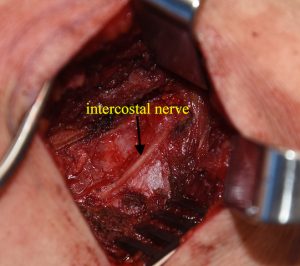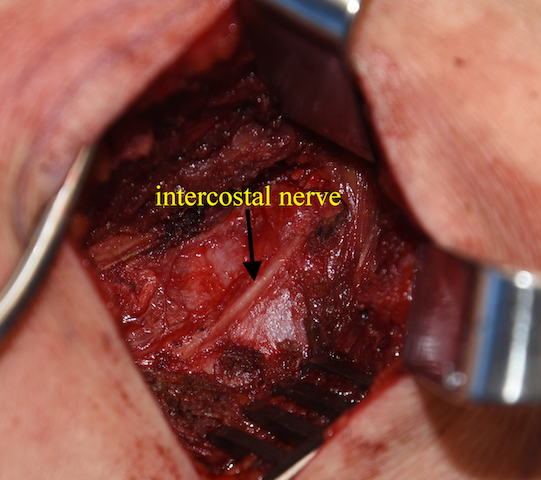Rib removal is an effective, albeit last resort, surgical technique for maximal horizontal waistline reduction. Done through small oblique lateral back incisions, the lower third of the outer half of the lower three ribs are removed. They are able to be done though such a small skin incision by a circumferential subperiosteal dissection technique that removes the cut outer half of each rib by an extraction technique.

Knowing the exact location of the nerve allows the use of small spoon elevators to gently tease the neurovascular bundle out in a proximal to distal direction. Having performed over 200 ribs removals to date, I have yet to see an intercostal nerve that could not be preserved throughout its length. This is a testament to the durability of the structure of the nerve as well as its natural ability to tolerate some stretching. Such wide open exposure of the nerve also allows it to be treated with long-acting local anesthetics for postoperative paint management as well as avoid catching it in any of the sutures used to close the soft tissue rib tunnel.
Dr. Barry Eppley
Indianapolis, Indiana



